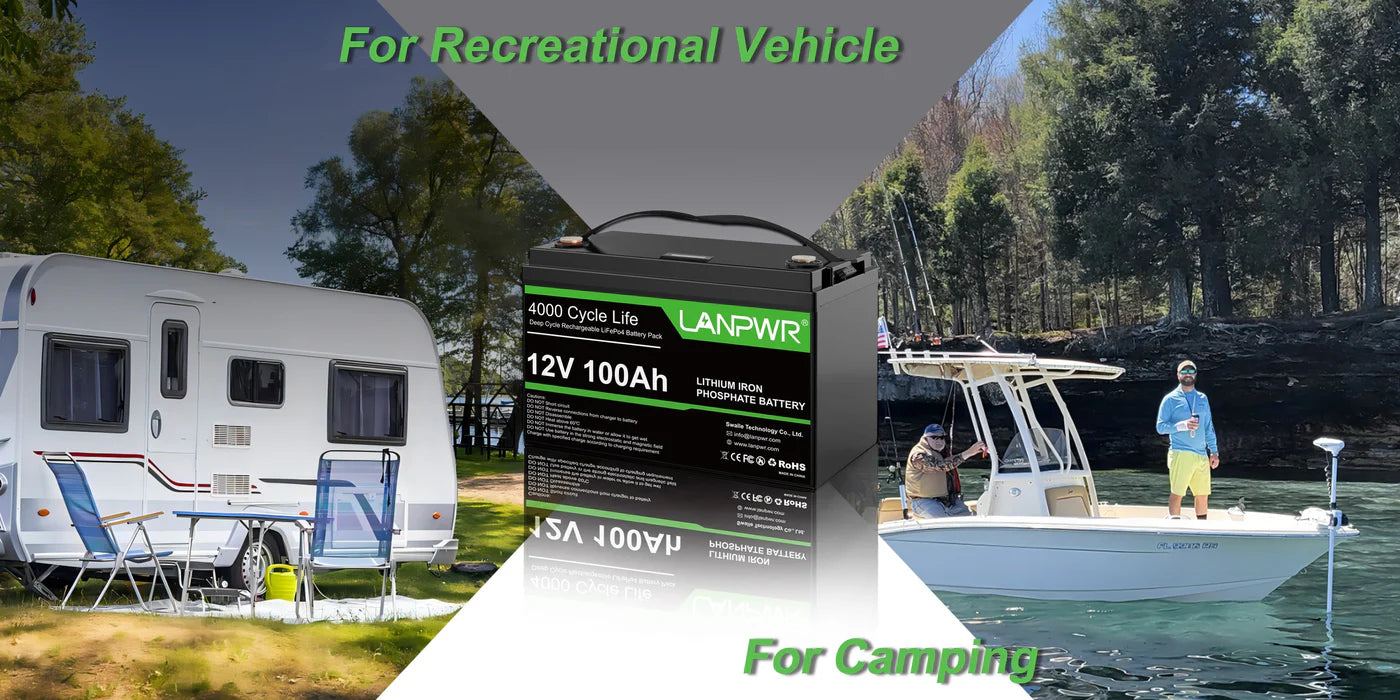Safety has always been the ultimate concern in rechargeable batteries, and the most contentious question is around the safety of two-fold types, lithium iron phosphate batteries (LiFePO4) vs regular lithium-ion batteries (Li-ion). Aside from the distinctive features and uses of both types, their effects on safety can be very pronounced. An in-depth comparison between LiFePO4 vs Li-ion batteries safety, and what goes into providing the securest batteries lying in the high end.
Learn about LiFePO4 vs Li-ion Batteries
LiFePO4 (Lithium Iron Phosphate) batteries
LiFePO4 batteries are a particular form of lithium-ion rechargeable battery that uses lithium iron phosphate as the cathode material. These are stable, long cycle life, and are safe. LiFePO4 -This is the chemical formula for lithium iron phosphate,-LiFePO4
Li stands for Lithium
Fe stands for Iron
PO4 stands for Phosphate
Conventional lithium-ion (Li-ion) batteries
Li-ion batteries are categorized more broadly as Lithium Cobalt Oxide (LiCoO2), Lithium Manganese Oxide (LiMn2O4), Lithium Nickel Manganese Cobalt Oxide (NMC), etc. In the case of batteries, the cathode is often a lithium metal oxide and the anode is graphite.
LiFePO4 Battery Safety
Chemical Stability
LiFePO4 batteries are an example of chemically stable batteries. The phosphate ion has strong covalent bonds that can not be broken in the event of thermal runaway, which means that oxygen would be unable to be free to induce combustion. Therefore, this characteristic inherently sets LiFePO4 batteries apart from many other lithium-ion chemistries, as they are more stable.
Thermal Stability
LiFePO4 batteries will survive at slightly high temperatures without decomposing. Lithium iron phosphate batteries up to around 270°C (518°F) before decomposing, are less likely to overheat and start burning than lithium-ion batteries which start decomposing at that temperature.
Overcharging Protection
Some batteries even manage to ''forgive'' overcharging to a certain degree. LiFePO4 batteries can even resist thermal runaway if they are overcharged. Most LiFePO4 batteries will have an integrated protection circuit that stops them from being overcharged, further improving their safety.
Long Cycle Life
Additionally, as LiFePO4 batteries have a long cycle life, the replacement requirement is rare, thereby minimizing the handling and disposal risks of used batteries. They can withstand 2,000 to 5,000 charge-discharge cycles before a notable degradation in their capacity.
Environmentally Friendly
LiFePO4 batteries aren't filled with noxious heavy metals like cobalt or nickel, making them much more environmentally friendly, and easier to recycle as well. It makes them also less of a hazard to health when they are made and disposed of.
Safety Characteristics of Conventional Li-ion Batteries
Chemical Composition
Lithium cobalt oxide (LiCoO2) and nickel-manganese-cobalt (NMC) chemistries for a Li-ion battery have more energy density but are not as chemically stable as the traditional ones. Cobalt in the battery does make the cells more reactive and therefore more susceptible to thermal runaway in some circumstances.
Thermal Runaway
Also, these lithium-ion batteries are even more prone to the phenomenon known as thermal runaway in which the battery heats up uncontrollably. Overcharging will also generate extra heat which can ignite or even explode any battery, and this is all the more likely if the battery has burst, heated up, or is subjected to extreme heat conditions. LiFePO4 batteries have a lower temperature of thermal runaway when compared to Li-ion batteries.
Protection Circuits
Li-ion batteries even have built-in safety mechanisms to avoid overcharging, short-circuiting, and over-discharging, but these safeguards can fail, especially if the battery is damaged. However, this requires more electronic checking and therefore adds a level of complexity and more potential points of failure.
Energy Density vs. Safety
Lithium-ion batteries (Li-ion), have a high energy density compared to other types of batteries which is an advantage for any device that uses them, but they can have a risk due to the high charge carrier density. Higher energy stored in a small space leads to a very high potential for catastrophic failure.
When Safety Gets Real
Use Case and Application
Ditto the safety of a battery type, which also has a lot to do with exactly what is being asked of it. LiFePO4 batteries are generally used when safety is the difference between life and death, in applications like electric vehicles, renewable energy storage, and medical devices. Due to their stable chemistry, in addition to having a lower risk of thermal runaway these sorts of applications compose the best application field.
On the flip side, consumer electronics tend to use Li-ion batteries with a higher energy density to support a longer battery life with smaller sizes. Nevertheless, these apps have to be equipped with strong security functionalities to counter potential threats.
Manufacturing Quality
Battery manufacturing quality has a big impact on safety. It does not matter what battery chemistry is used bad manufacturing can introduce defects that boost the chances of failure. With strict quality control processes, Only the most reliable manufacturers can be trusted to safely produce LiFePO4 and Li-ion batteries.
Maintenance and Handling
Batteries need to be kept and maintained well to avoid harm. In situations where the batteries might be subject to less than optimal conditions, LiFePO4 batteries can be a safer bet with their less harsh attitude. Yet, no lithium-ion battery, including LiFePO4, should be mistreated, such as with usage at high speeds, harsh temperatures, and full discharge.
Comparative Analysis
The thermal and chemical stabilities
LiFePO4 batteries have significant thermal and chemical stability. They are by design a safer technology because they are more stable at high temperatures with a significantly lower potential to go into thermal runaway. While traditional Li-ion batteries have much higher energy densities, they are also notoriously prone to overheating, and so require robust and sometimes costly fail-safes to avoid disaster.
Overcharge and Discharge Tolerance
LiFePO4 batteries are more overcharged, with deep discharge tolerance. For safety, that should be a good thing, especially in scenarios where the charging infrastructure may not be quite so advanced. By contrast, traditional Li-ion batteries must be charged and discharged under careful control to prevent damage and safety risks.
Impact on Environment and Health
LiFePO4 batteries are safer because they do not contain cobalt nickel and other toxic heavy metals, from the perspective of Environmental protection and conservation of the human(wc) body, the protect battery battery (esb) is good for the environment. It means it reduces the environmental impact and health risks of battery manufacturing, use, disposal, etc. Consequently, traditional batteries (such as Li-ion batteries with cobalt) are more environmentally and hormonally problematic.
Cost and Availability
LiFePO4 batteries can be a bit expensive and hard to get hold of.
Costly: They are significantly more costly to make and buy than a portion of the customary Li-Ion batteries. But over the years the cost of these improvements is offset by safety benefits and longer service life, especially in applications where safety and longevity are of importance.
Final Word
In terms of safety, LiFePO4 batteries are compared with ordinary Li-ion batteries, it will also be much better, and LiFePO4 has better thermal stability and chemical stability, overcharge overheating and over-discharge deeper tolerance, and then compared with the same capacity of the polymer and ternary lithium battery, the safety will be doubled, in the environment and human health effects will be extremely small. This makes these lithium iron phosphate batteries very safe and hence ideal for applications dependent on safety, for example, in electric vehicles, renewable energy storage, or medical devices.
Traditional Li-ion batteries, are more energy-dense and essential for many consumer electronics but largely depend on solid protection mechanisms or even the right way of use to guarantee safety conditions. When faced with selecting between LiFePO4 and Li-ion, the decision should be based on the requirement/ application, considering the trade-offs in energy density, price, and safety.
To sum it up, for applications where there are no compromises on safety, then LiFePO4 is the best choice. Under the right precautions and care, traditional Li-ion technology is still a viable solution in diverse use cases. To make intelligent decisions about how you use and manage your batteries, it is important to understand the differences of each type along with how they are safe or not.














Leave a comment
This site is protected by hCaptcha and the hCaptcha Privacy Policy and Terms of Service apply.